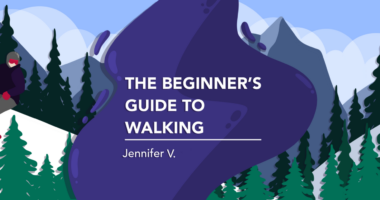The Ongoing Process of Grief

It rained the day before and after, but on the day we buried Dad, the overcast weather parted for a picturesque blue sky, complete with rolling white clouds. For mid-April, it could’ve been a cold, miserable day, matching our mood. Instead, the sun warmed us, so we didn’t need jackets, and the slightest breeze complemented the otherwise perfect spring day.
As we lowered his casket into the ground, a single monarch butterfly danced around us. My three siblings and I all saw it. Now, three years later, we send each other photos, even if it’s a blurry cellphone photo, of a monarch butterfly that has crossed our path. I want to tell myself they are a coincidence, but the butterfly tends to appear at moments when we’re in distress. Perhaps we seek them out, but they give us comfort, so I leave our belief alone.
The day we said goodbye to Dad was the hardest day of my life. While there are still moments when I miss him, I recognized long before he passed away how short and fragile life really is. This has helped me grieve my loss and focus on the life I am still living.

Jennifer’s father, Eric van Amerom, at work in the early ’70s. (Courtesy of Jennifer van Amerom)
Fearing the worst
Throughout this journey with neuromyelitis optica (NMO), there have been moments when I’ve been faced with my own mortality. I have wondered how long I could live with the all-consuming pain, only to be saved by my specialists and the treatment plans they’ve put me on.
During my last attack — when my optic nerve flared, causing the most excruciating pain in my head — my vision blurred, and involuntary tears ran down my face. I found myself admitted to the hospital with doctors unsure they’d be able to help me. Even with the administered IV steroids, the doctors couldn’t hide the worry on their faces.
This was when I wrote a letter to my daughter. Because of my vision, it took me all day, my handwriting messy at best, the sheet stained with my tears. I wrote all the words of encouragement I thought she’d need throughout life.
When the doctors finally suggested injecting steroids directly into my skull with four long, thick needles, I didn’t hesitate. I was in that much pain.
There was only one specialist who was certified in this technique and only recently, which gave me no comfort. This specialist was on his rounds on my day three of this hospital visit. By then, I was delusional with pain. While I’m terrified of needles, I thought it was the end, so I agreed to the procedure. My brain was starting to feel the literal and figurative pressure. The specialist warned me the needles would be painful, that I had to be awake, and I couldn’t move.
Painful was an understatement.
Within 10 minutes of the last needle, I felt a wave of relief. The pain went away completely. Knowing that I could go home and hug my daughter was everything.
Relieved and pleased with his work, my doctor signed the discharge papers and said, “I’m glad this worked, but you may need to have this procedure done again next month and maybe every six months moving forward to stop the inflammation again.”
I had grieved my own life and all that it wouldn’t be during that hospital stay, only to be saved by a doctor who was suggesting he may need to inflict more pain to continually save me.
Patience as a patient
I try not to be a patient first, but this is my reality if I want to be a wife, daughter, sister, family, friend, working professional, and a living being. They say, “Take care of yourself first,” but I hate feeling selfish. I’m also inclined to be a dreamer, the type who believes I can make a change, but I’ve often had to become a realist. Limitations do exist, even if I try to ignore them.
This is what life with NMO has taught me. Everything must have balance, including life and death. Even with sadness, there is eventually happiness, provided I’m patient enough to work through the process.
Losing a parent will age you. I am now closer to the top of the family hierarchy, but I have made peace with this idea. If grief teaches us anything, be it for a loved one or for a part of yourself that once was, it is that we gain valuable knowledge and strength. I hope I’m teaching the next generation, my daughter, just that.
Note: Neuromyelitis News is strictly a news and information website about the disease. It does not provide medical advice, diagnosis, or treatment. This content is not intended to be a substitute for professional medical advice, diagnosis, or treatment. Always seek the advice of your physician or other qualified health providers with any questions you may have regarding a medical condition. Never disregard professional medical advice or delay in seeking it because of something you have read on this website. The opinions expressed in this column are not those of Neuromyelitis News or its parent company, Bionews, and are intended to spark discussion about issues pertaining to neuromyelitis optica spectrum disorder (NMOSD).







Leave a comment
Fill in the required fields to post. Your email address will not be published.